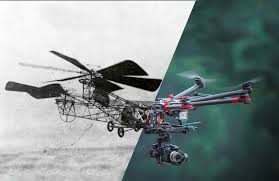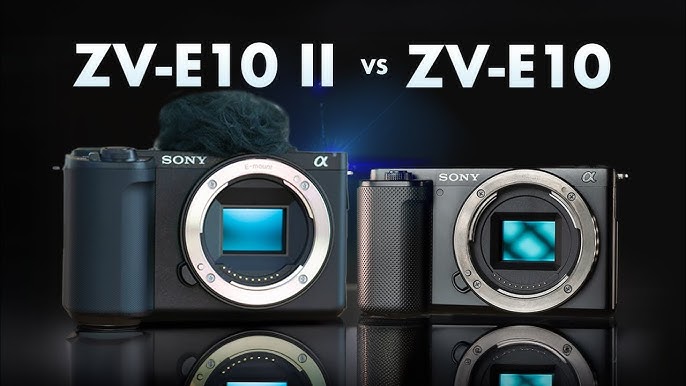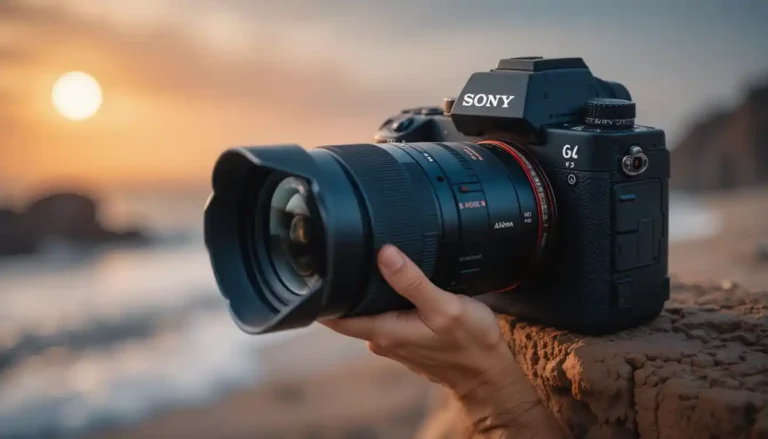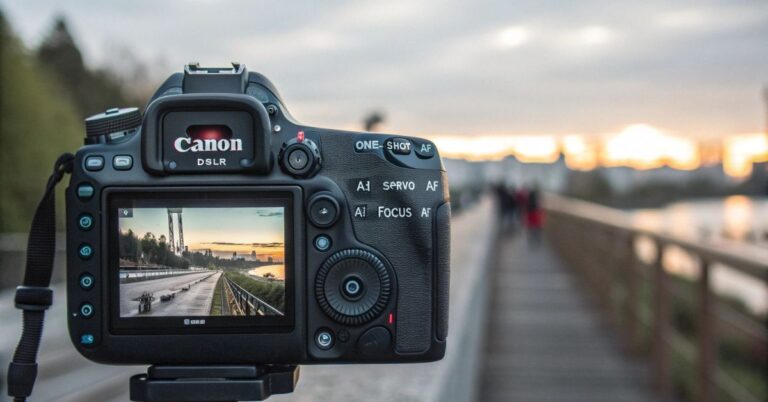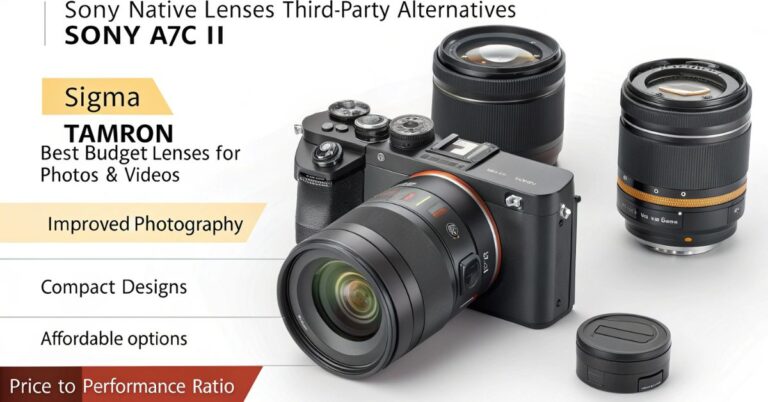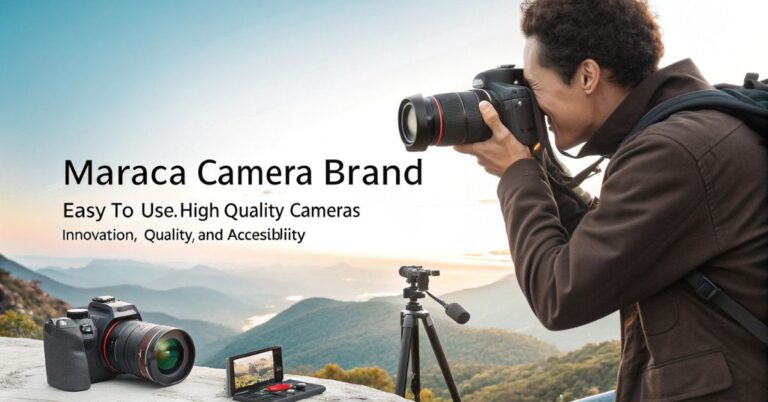When Were Drones Invented? A Deep Dive Into Their Fascinating History!
Drones are now everywhere, from capturing stunning aerial photos to helping in disaster relief. But when were drones invented? The history of drones stretches back over a century. Understanding their origins gives us insight into how this revolutionary technology evolved and why it continues to reshape industries and societies today.
Early Concepts: Pre-Drone Aerial Innovation (Before 1900s)
Before modern drones, inventors imagined unmanned flying machines. In the 19th century, balloon bombs and pilotless gliders hinted at the concept of remote flight. These early ideas laid the groundwork for the drone revolution. During the American Civil War, both Union and Confederate forces experimented with balloon surveillance.

By the late 1800s, innovators began exploring automatic flight control, marking the first steps toward autonomous aerial systems. Though primitive, these efforts sparked the imagination for what would eventually become drone technology.
The First Known Drone: World War I Era (1916–1920s)
The first real drone-like aircraft was the “Kettering Bug”, developed in 1916 by Charles Kettering. Designed as a flying bomb, it was controlled by a primitive guidance system using gyroscopes.
- Used during WWI by the U.S. Army
- Range: around 75 miles
- Guidance: preset gyroscopic flight path
Though never used in battle, it marked the first serious step toward drone technology.
WWII and Remote-Controlled Aircraft (1930s–1940s)
World War II saw rapid drone development. The U.S. and U.K. built target drones for training anti-aircraft gunners.
Key Highlights:
- The Radioplane OQ-2, built by actor Reginald Denny, became the first mass-produced UAV in the U.S.
- Over 15,000 were manufactured during WWII.
- Used extensively for military training, not combat.
These drones relied on radio signals and marked a transition toward practical unmanned aircraft.
Cold War and the Birth of Spy Drones (1950s–1970s)
As tensions rose between superpowers, drones became tools for covert surveillance.
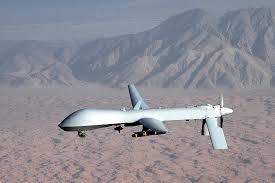
Notable Developments:
- Ryan Firebee (1951): A jet-powered drone used for reconnaissance.
- AQUILA UAV (1970s): One of the first drones with video transmission capabilities.
These drones were crucial in gathering intelligence without risking pilot lives, especially during the Vietnam War.
Technological Boom: The Rise of Modern UAVs (1980s–1990s)
The 1980s and 1990s introduced advanced computers, GPS, and long-range communication systems.
Israeli Influence:
- Israel led innovation with drones like the Scout and Pioneer, used in the Lebanon conflict.
- Provided live video feeds, a game-changer for military strategy.
U.S. Military Impact:
- MQ-1 Predator: Developed in the mid-1990s, it became the first drone equipped with live-feed cameras and missiles.
- Used extensively in Iraq and Afghanistan for targeted strikes.
When Were Civilian Drones Invented? (2000s Onward)
Until the 2000s, drones were mostly military. But after 2006, the FAA began issuing permits for commercial drone use, sparking a boom in civilian applications.
Civilian Drone Uses:
- Aerial photography and filmmaking
- Real estate marketing
- Agricultural crop monitoring
- Infrastructure inspection
- Emergency response
DJI launched the Phantom 1 in 2013, one of the first ready-to-fly drones for consumers. It revolutionized the consumer drone market with built-in cameras and GPS stabilization.
Key Milestones in Drone Invention Timeline
| Year | Milestone | Description |
|---|---|---|
| 1916 | Kettering Bug | First prototype drone used by U.S. Army |
| 1935 | Radioplane Drone | First mass-produced UAV |
| 1951 | Ryan Firebee | Jet-powered surveillance drone |
| 1995 | MQ-1 Predator | First armed military drone |
| 2013 | DJI Phantom | Revolutionized consumer drone market |
How Drones Evolved Over the Years
Drones have transformed in both design and function.
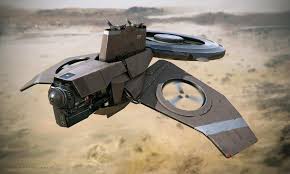
1. Technology
- Then: Gyroscopes and radio controls
- Now: AI, GPS, facial recognition, 4K cameras
2. Purpose
- Then: Military-only use
- Now: Commercial, creative, agricultural, medical, and industrial
3. Accessibility
- Then: Restricted to military
- Now: Available to the public at affordable prices
Who Invented the Drone? A Closer Look
Charles Kettering (Kettering Bug)
Reginald Denny (Radioplane drones)
Abraham Karem, known as the father of the modern drone (developed the Predator)
Their innovations laid the foundation for everything from military drones to the ones we fly for fun today. Kettering’s WWI-era flying bomb was among the earliest attempts at unmanned flight. Denny brought radio-controlled aircraft to the U.S. military during WWII, even employing a young Norma Jeane (later Marilyn Monroe) at his factory. Karem’s Predator drone reshaped modern warfare, introducing endurance, precision, and remote operation. Together, these pioneers transformed science fiction into reality.
Modern Drone Laws and Regulations
As drones became popular, so did the need to regulate them.
In the U.S.:
- FAA requires drone registration
- Maximum altitude: 400 feet
- No flying near airports without permission
- No flying over crowds
Countries like the UK, Canada, and Australia have similar regulations.
The Future of Drones: What’s Next?
Drone taxis:
Companies like EHang and Joby Aviation are testing passenger drones designed for urban air mobility. These electric vertical takeoff and landing (eVTOL) aircraft could reduce traffic and revolutionize city commuting. Governments are beginning to create regulations to safely integrate air taxis into public airspace.
AI-powered surveillance:
Artificial intelligence is enhancing drone capabilities in real time. Drones equipped with AI can analyze footage on the fly, identify objects, track movements, and even make autonomous decisions. This is especially valuable in disaster response, security monitoring, and border control.
Autonomous delivery:
Amazon, Walmart, and UPS are experimenting with drone delivery systems that could change how we receive goods. These drones promise faster, contactless deliveries of everything from groceries to medical supplies, especially valuable in remote or hard-to-reach areas.
Swarm technology:
Military and research organizations are developing drone swarms, groups of drones that fly in coordinated patterns, sharing data and reacting as a single unit. Swarms can be used for surveillance, search-and-rescue, or even tactical operations in defense scenarios.
Why Knowing When Drones Were Invented Matters Today
Understanding when were drones invented helps us appreciate the journey of this powerful technology and its deep impact on the modern world. From their early use in military operations to their current roles in media, delivery, agriculture, and disaster relief, drones have dramatically evolved. They’ve gone from top-secret defense tools to widely available consumer gadgets that anyone can purchase online.
This rapid transformation also raises important ethical, legal, and safety concerns. As drones become more advanced and autonomous, society must consider issues like airspace regulations, privacy, and responsible usage. Knowing their origin isn’t just about history, it’s about understanding how far we’ve come and how thoughtfully we must shape the future.
Conclusion: The Journey from Battlefield to Backyard
So, when were drones invented? It all started over 100 years ago with military innovations like the Kettering Bug. Over the decades, drones evolved from simple flying machines to complex systems used in everything from filmmaking to agriculture.
What’s clear is that the drone journey is just beginning. With AI, automation, and smarter tech, drones will continue to change our skies—and our lives.
FAQs: When Were Drones Invented
1. When were drones first used in war?
Drones were first used during World War I with the Kettering Bug and later in WWII for target practice and reconnaissance.
2. Who is considered the father of modern drones?
Abraham Karem, who developed the Predator drone, is widely regarded as the father of modern UAVs.
3. What was the first consumer drone?
The DJI Phantom 1, launched in 2013, was the first widely available consumer drone with advanced features.
4. Are drones only used for military purposes?
No, drones are now used in filmmaking, agriculture, inspection, delivery, and emergency response.
5. How has drone technology improved?
Modern drones use GPS, AI, facial recognition, live video, and even thermal imaging, unlike early drones that relied on basic controls.
6. Are drones regulated by law?
Yes, in most countries, drones are regulated to ensure safe and legal flying. Always check local rules before operating a drone.
